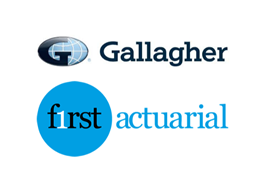Adrian Bourne, co-chair of the Society of Pension Professionals’ covenant committee, outlines recent changes to the ‘value at risk’ measure for DB pension schemes and what trustees and other stakeholders must now consider.

With many defined benefit (DB) pension schemes now in surplus, covenant advisers and others are turning their attention to tail risks. The mantra is ‘low risk, not no risk’.
On the face of it, this is an easy message to deliver, but what does it translate to in practice? And, more pertinently, where do you draw the line when it comes to risk?
The answer is, unfortunately, that it means different things to different people, including advisers and stakeholders.
Understanding the change to value at risk
Value at risk (VaR) has played an essential part in risk management for most schemes for many years, supporting a simple stress test using a ‘what if’ approach. A one-year, one-in-20 VaR was used to highlight a pension scheme’s risk.
Importantly, it gave covenant advisers – who are more familiar with the ‘dark arts’ of actuaries and their discount rates – an excuse to reach out to our investment colleagues and build bridges to understand their alchemy.
Best practice emerged, and life was good… but not for long.
A fairly rapid change in gilt yields has contributed to a position in which many scheme deficits have all but disappeared, including at ‘low dependency’ funding levels.
Stir into the mix a new DB funding regime – and most critically a new VaR metric – and the end result is a messy picture, with compliance obligations butting up against how corporates and trustees understand and appreciate a scheme’s risks.
The new one-year, one-in-six VaR (a smaller number than a one-in-20 VaR) soon became a six-year, one-in-six VaR, assuming your reliability period is six years. This is a bigger number than a one-in-20 VaR. More risks to manage and underpin? Really?
The wider impact

Beyond the headlines, the dynamics of VaR are relatively complex and include how it changes over time, but it has become accepted as a litmus test that informs trustees when considering downside risks.
The crucial word is “inform”. In my view, it never truly drove behaviour in the way that the new one-in-six VaR has the potential to do – for example, through challenging corporates to maintain or broaden a covenant net so there is ongoing cash generation that can be tapped as and when needed to top up a fully funded pension scheme.
And are two VaRs ever the same? Not in my experience. This, unfortunately, erodes confidence in what can be a key influencer of corporate activity.
Indeed, after decades of cash funding, corporates may feel like they have reached the top of the hill. What else do they have to do as regards allocating cash when another ‘pension peak’ looms large?
Does that encourage endgame solutions as opposed to run-on for all but the larger schemes if the fettering of corporate activity is perceived to be at odds with the size of risks in play?
Covenant assessors have a key role to play in shaping the framework for future risk management. with deep empathy and understanding of corporate goals and their risk profiles. They ‘speak the language’ and have the ability to join up the dots in a pragmatic and balanced way for all stakeholders.
Getting on the same page on covenant requires an early, open, all-parties discussion about a pension scheme’s risks, appetite, and timeframes, as well as how these marry up with new regulatory obligations. These obligations have evolved rapidly, and without broader empathy for and balance with corporate considerations.
Without this foundation, there is a risk of ‘knee-jerk’ actions, which could drive corporate behaviour that isn’t necessarily beneficial for a pension scheme in the long run. Most tails don’t wag dogs!
Adrian Bourne is co-chair of the Society of Pension Professionals’ covenant committee.






















